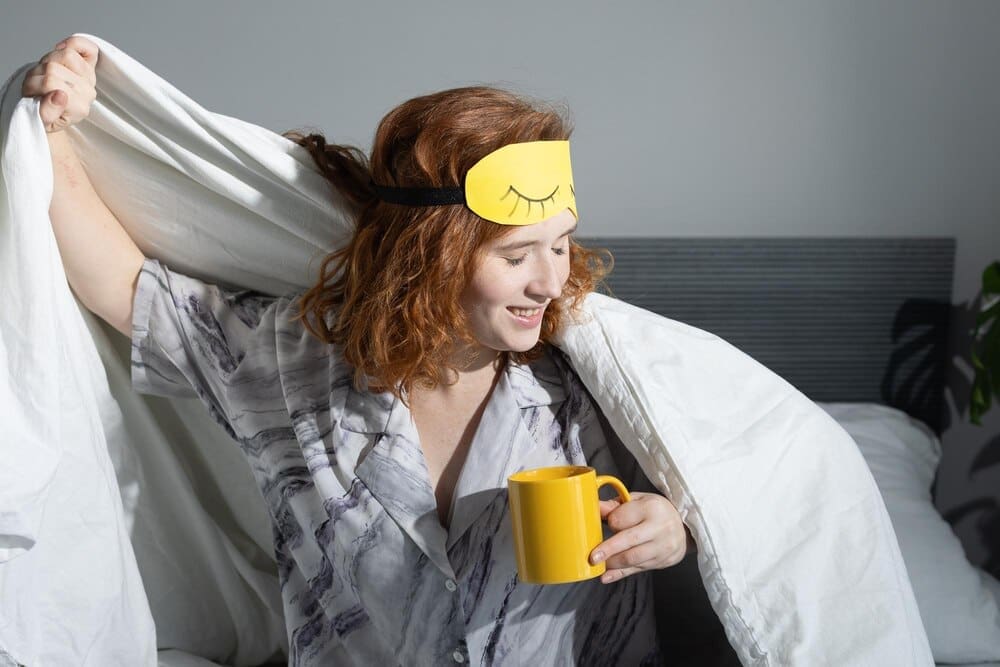A consistent, relaxing bedtime routine is a powerful, evidence-based strategy for improving sleep quality and combating the pervasive issue of sleep deprivation affecting millions worldwide. This nightly ritual, typically lasting 30 to 90 minutes, involves a sequence of calming activities that signal to the brain and body that the day is over and it is time to rest. For anyone struggling to fall asleep or stay asleep, from stressed professionals to overstimulated teens, establishing this routine can help regulate the body’s internal clock, reduce anxiety, and forge a strong psychological association between pre-sleep habits and deep, restorative rest.
Why a Bedtime Routine is Crucial for Your Brain
The effectiveness of a bedtime routine isn’t just anecdotal; it’s rooted in fundamental principles of human biology and psychology. Our bodies operate on an internal 24-hour cycle known as the circadian rhythm, which governs our sleep-wake patterns, hormone release, and other bodily functions. This internal clock is profoundly influenced by external cues, most notably light and darkness.
By performing the same set of activities in the same order each night, you provide your brain with powerful, predictable cues that reinforce this natural rhythm. This consistency helps regulate the production of key hormones. As darkness falls and you begin your routine, your brain increases the production of melatonin, the hormone that promotes sleepiness, while decreasing cortisol, the hormone associated with stress and alertness.
Beyond hormonal regulation, a bedtime routine works through the power of classical conditioning. Just as Pavlov’s dogs learned to associate a bell with food, your brain can learn to associate your specific pre-sleep activities—such as reading a book, sipping herbal tea, or listening to calm music—with the onset of sleep. Over time, these actions become potent triggers for drowsiness, making the transition into sleep smoother and more automatic.
Modern life often keeps our sympathetic nervous system, our “fight-or-flight” response, in a state of high alert long after the workday has ended. A deliberate wind-down period helps to deactivate this system and engage its counterpart, the parasympathetic nervous system, which is responsible for the “rest-and-digest” state. This physiological shift is essential for lowering your heart rate, relaxing your muscles, and preparing your body for deep sleep.
Building Your Personalized Bedtime Ritual: The Core Components
There is no one-size-fits-all bedtime routine. The most effective ritual is one that you find genuinely relaxing and can stick with consistently. The goal is to choose a few key activities that help you disconnect from the day’s stressors and ease into a state of calm. Here are the foundational elements to consider when building your own.
Step 1: Set a Consistent Schedule
The bedrock of healthy sleep is a consistent schedule. This means going to bed and waking up at approximately the same time every day, including weekends. While it can be tempting to sleep in on Saturdays, doing so can disrupt your circadian rhythm, leading to a feeling akin to jet lag on Monday morning.
Aim for a schedule that allows for 7-9 hours of sleep per night, which is the recommended amount for most adults. A fixed wake-up time is particularly important, as it helps to anchor your entire sleep-wake cycle.
Step 2: Disconnect From Screens
One of the most significant disruptors of modern sleep is the blue light emitted from electronic devices like smartphones, tablets, computers, and televisions. This particular wavelength of light is especially effective at suppressing the production of melatonin, tricking your brain into thinking it’s still daytime.
Implement a “digital sunset” by putting away all screens at least 60 to 90 minutes before your intended bedtime. If you must use a device, enable its “night mode” feature or use blue-light-blocking glasses to minimize the impact. This screen-free time is the perfect window to engage in the other calming activities of your routine.
Step 3: Create a Soothing Environment
Your bedroom should be a sanctuary for sleep. Optimizing the environment sends a clear message to your brain that this space is for rest and intimacy only, not for work, arguments, or scrolling through social media. Focus on three key sensory inputs: temperature, light, and sound.
Most experts agree that a cool room is more conducive to sleep. A drop in core body temperature is a natural signal for sleep, so aim to keep your thermostat set between 60-67°F (15-19°C). Ensure your bedroom is as dark as possible by using blackout curtains or wearing a comfortable eye mask. Finally, manage noise by using earplugs or a white noise machine to drown out disruptive sounds.
Step 4: Incorporate Calming Activities
This is where you can personalize your routine. Choose one or more activities that you find genuinely soothing. The key is to select things that are not mentally or physically stimulating.
- Read a Physical Book: Reading can be a wonderful escape, but opt for a paper book or an e-reader without a backlight. Avoid intense thrillers or work-related material that might cause your mind to race.
- Journaling: A “brain dump” is an effective technique for externalizing worries. Spend 10-15 minutes writing down everything on your mind—your to-do list for tomorrow, anxieties, or unresolved thoughts. This act of getting it on paper can provide a sense of closure and clear your mental slate.
- Meditation and Breathing: Mindfulness meditation and deep breathing exercises are proven to calm the nervous system. A simple technique is the 4-7-8 breath: inhale through your nose for 4 seconds, hold your breath for 7 seconds, and exhale slowly through your mouth for 8 seconds. Repeat this several times.
- Gentle Stretching: Light, gentle stretches or restorative yoga poses can help release physical tension stored in the body. Focus on slow, deliberate movements in your neck, shoulders, and lower back.
- Take a Warm Bath or Shower: Soaking in a warm bath about 90 minutes before bed can aid sleep. The subsequent drop in your body temperature after you get out mimics the natural temperature decline that precedes sleep, acting as a powerful trigger for rest.
Step 5: Mind Your Diet and Drinks
What you consume in the hours before bed can have a major impact on your sleep. Avoid large, heavy meals within two to three hours of bedtime, as the digestive process can be disruptive. Stimulants like caffeine and nicotine should be avoided for at least six hours before you plan to sleep.
While alcohol may make you feel drowsy initially, it ultimately fragments sleep later in the night, reducing its restorative quality. Instead, consider a warm, caffeine-free beverage like chamomile or lavender tea, which have mild sedative properties.
Common Pitfalls and How to Avoid Them
As you begin to implement your routine, be aware of common challenges that can derail your progress. Understanding them ahead of time can help you stay on track.
Trying to Do Too Much
It can be tempting to create an elaborate, hour-long ritual from day one. However, this can feel overwhelming and unsustainable. Start small with just one or two simple activities, like reading for 15 minutes and doing a few deep breaths. Consistency is far more important than complexity.
Expecting Immediate Results
It takes time for your brain to build new habits and associations. Don’t be discouraged if you don’t see a dramatic improvement in your sleep after just one or two nights. Give yourself several weeks of consistent practice to allow the routine to take full effect.
Using the Bedroom for Worrying
If you find yourself lying in bed unable to sleep for more than 20 minutes, get up. Go to another dimly lit room and do a quiet, non-stimulating activity until you feel sleepy again. Staying in bed while feeling anxious or frustrated can create a negative association with your sleep environment.
When to Seek Professional Help
A bedtime routine is a powerful tool, but it is not a cure-all for serious sleep disorders. If your sleep problems persist or worsen despite establishing a healthy routine, it may be time to consult a professional. Chronic insomnia, sleep apnea (characterized by loud snoring and pauses in breathing), or restless leg syndrome often require medical intervention.
A physician or a sleep specialist can provide a proper diagnosis and recommend treatments. For chronic insomnia, the gold-standard, evidence-based treatment is a form of therapy called Cognitive Behavioral Therapy for Insomnia (CBT-I), which helps restructure thoughts and behaviors around sleep.
In conclusion, creating a relaxing bedtime routine is an act of profound self-care. It is a deliberate, structured way to tell your mind and body that it is safe to let go of the day’s demands and embrace the restorative power of sleep. By prioritizing consistency, personalizing your activities, and creating a peaceful environment, you can reclaim your nights and, in turn, vastly improve your energy, mood, and overall health during the day.












